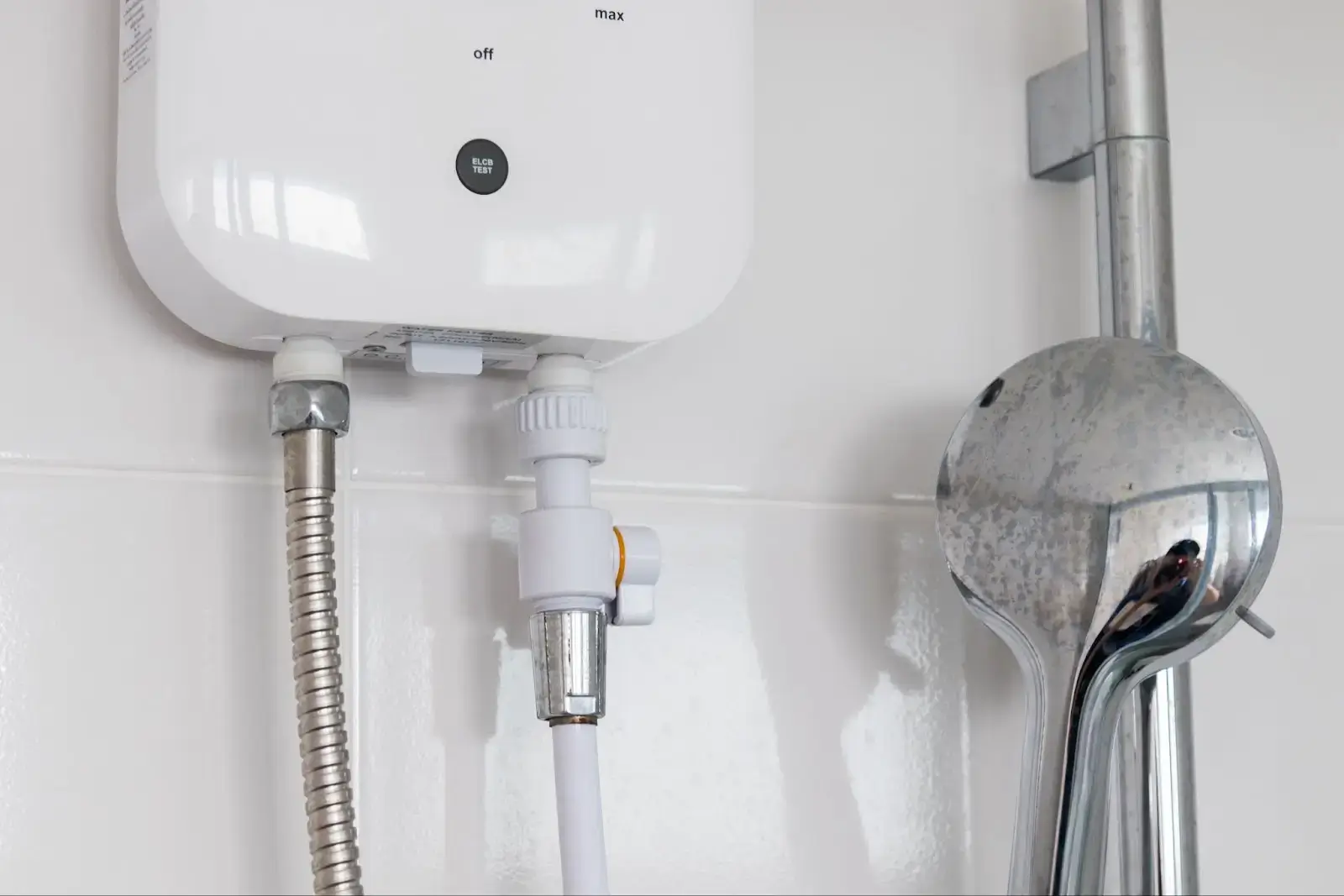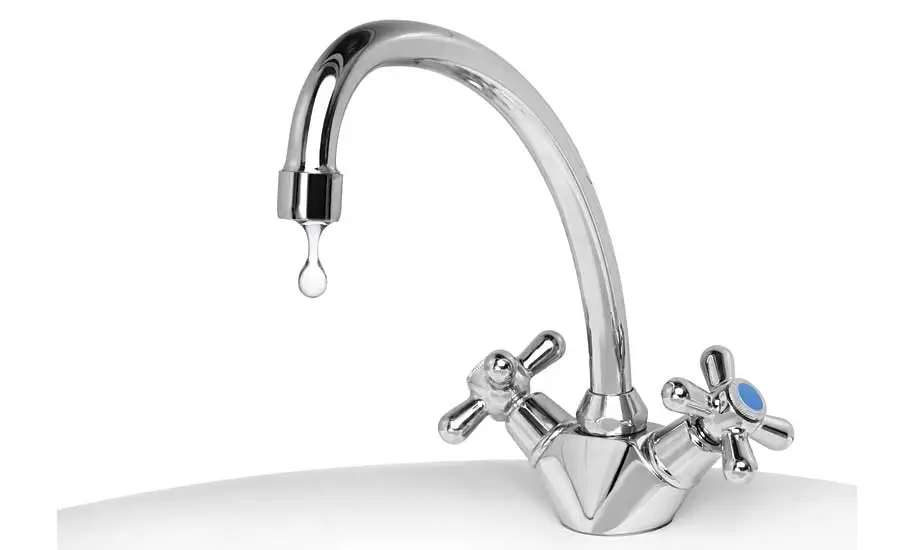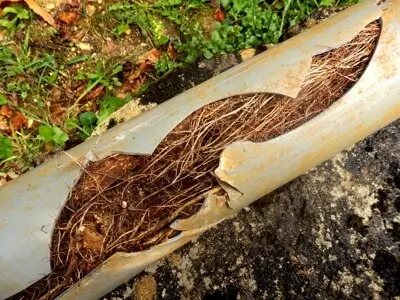Winter rolls around and suddenly that humble furnace blower motor goes from the Rodney Dangerfield of HVAC components to the hardest working piece of equipment in your home. While it may not get much respect, this crucial part is essentially your heating system's beating heart.
Without a properly functioning blower motor to circulate all that toasty air through your ductwork and vents, even the most powerful furnace becomes completely useless. It'd be like having an engine with no transmission to turn the wheels - your heat just stays trapped under the hood.
So before you find yourself stuck shivering through another bone-chilling season because the blower conked out, take some time to get better acquainted with this vital part. How it works, why it fails, the key warning signs, and when professional service becomes a necessity.
From maintaining reliable performance to knowing your repair vs. replacement options, consider this your ultimate blower motor owner's manual. By the end, you'll have a whole new appreciation for this underdog HVAC hero that does the heavy lifting each winter.
Intoduction to Furnace Blower Motors
Every home heating system has an unsung hero component that does the heavy lifting each winter - the furnace blower motor. While burners and heat exchangers generate the toasty air, this hardworking motorized part circulates and distributes that warmth throughout your home.
The blower motor's core job is simple yet vital - spin an air handler fan to push heated air from the furnace through your duct system and out the vents/registers. It's essentially the central "pump" in your HVAC system's air circulation network.
Without the blower running to create airflow, that expensive furnace in your basement or utility room is nothing more than an energy-guzzling space heater. You'd get zero heat distribution to actually warm living spaces! The burners would cycle endlessly with nowhere for the conditioned air to go.
In many ways, you can think of the blower motor as your heating system's heart. It takes the "oxygen" of heated air produced and sends it coursing through your home's "circulatory" ductwork pathways. When operating at peak condition, the blower provides consistent, even temperatures in every room.
Of course, these motors don't just spin a simple fan anymore in modern high-efficiency furnaces. Many now utilize advanced blower designs like electronically commutated (EC) models or multi-speed configurations to maximize airflow. But even basic setups serve that fundamental circulation role.
Whether a high-tech variable blower or old-school single-speed version, this motor remains a critical link in your heating system's performance chain. Understanding how it functions - and the signs when something isn't right - empowers you as the owner to protect this invaluable furnace component.
Understanding Furnace Blower Motors
Alright, now that we've covered why blower motors are such a pivotal players, let's geek out a bit more on the specific mechanics behind these air circulation MVPs.
At the core, all blower motors serve the same basic function - spin a fan to push all that heated air your furnace kicks out through the ductwork maze and into your home's living spaces. But there are actually two main categories these workhorses fall into based on their particular designs.
Direct Drive Blower Motors
We'll start with the straight-shooters called direct drive blower motors. These motors connect straight to the fan itself with no extra parts in between. The motor's shaft essentially extends right into the fan hub so they both spin in perfect sync at the same RPMs.
Most modern furnaces rock this direct drive setup for its efficient, no-nonsense approach. With nothing but the motor and fan involved, there's way less friction and noise compared to some fancier pulley systems. Direct drives also tend to offer on-point airflow control even at lower operating speeds.
Belt-Driven Blower Motors
On the other hand, you've got the belt-driven motors flexing their torque capabilities. These brawny blowers use a good ol' fashioned belt-and-pulley system to transfer their powerful rotations over to the fan. That belted connection lets the motor and fan operate at different speeds for maximizing airflow.
While not quite as energy-efficient as direct drive due to slight power losses from the belt system, these belt-driven setups have some serious benefits. Their ability to create high-velocity air movement using smaller motor sizes is clutch. And that flexible speed control gives your HVAC system way more versatility.
Whether your blower flexes the simple direct drive style or brings the heavy belt-driven muscle, they both play a vital role in squeezing every last ounce of performance from your furnace's heated air output.
The more capable the blower is at consistently circulating and distributing all those BTUs, the better job your system can do at keeping temperatures steady without hot or cold zones. Having the wrong-sized blower that can't keep up with designed airflow rates is a surefire recipe for discomfort and inefficiency.
Proper blower operation also helps prevent wasteful temperature stratification inside your home while shielding the furnace's heat exchangers from premature burnout. A steady, high-volume airflow is key for extracting maximum heat transfer before discharge air exits out your vents.
So while they might not look like much more than a basic spin-fan, understanding how these blower workhorses contribute to overall furnace performance is crucial for owners. Sizing, installation, and maintenance - it all makes a major difference!
Identifying Common Issues with Furnace Blower Motors
With the blower motor working hard as your furnace's heart and lungs throughout the winter, malfunctions are bound to occur over time. Whether your system's low on "breath" or experiencing some irregular "palpitations" - those symptoms could indicate the blower is on the fritz.
Let's run through some of the telltale signs you've got a blower motor issue brewing. If you catch these red flags early enough, some preventative maintenance might be enough to get your blower's pulse pumping stronger again.
Lack of Airflow
When yoru blower starts slowing down and losing steam, weak or uneven airflow through your vents tends to be the first obvious indicator. Rooms feeling stuffy and warm even with the furnace blasting? Cold and hot spots popping up around your home? That's a blower wheezing for air circulation assistance.
Grinding, Rattling, or Squealing
You know that smooth, consistent hum of the blower kicking on at full song? Well, pay attention if those soothing operational melodies turn into rumbling grinding noises, erratic rattles, or high-pitched squeals instead. Those unnerving sounds are like an EKG signaling arrhythmia - something is amiss with the blower's rotation.
Overheating and High Energy Bills
Overheating and spiking electricity costs could mean your blower motor is overstressing trying to compensate. When airflow gets restricted or other mechanical failures occur, the blower works overtime to keep up. That excess strain radiates heat through your system while bleeding money on bloated utility bills.
If you detect any of those concerning symptoms, don't ignore them! Underlying culprits like worn bearings, struggling capacitors, or overall motor burnout are only going to exacerbate until total failure eventually strikes. An ounce of prevention goes a long way.
Bearings wearing out over years of constant use are one of the most common mechanical blower issues. As they deteriorate, that added friction leads to grinding noises, overheating, and airflow resistance. Capacitor problems can cause erratic blower behavior too - stalling, inconsistent speeds, etc. From there, you risk overheating compounding component damage.
And if that blower slows to a crawl or outright dies? Well, say goodbye to any circulation of that heated air! Letting worrisome symptoms like these linger without professional diagnosis makes a breakdown far more likely down the line.
So whether you're hearing funky noises, feeling weak breezes, or have a bathroom scale's worth of hot air trapped in the furnace - be proactive about calling in an expert on the double!
The Impact of a Faulty Blower Motor
Now that we've covered some of the major red flags that your trusty blower motor might be on its last legs, let's talk about the fallout you could face by ignoring those warning signs.
The Comfort Impact
At best, limping along with a faulty blower leads to some pretty aggravating heating headaches and discomfort around the home. You're going to start experiencing those telltale hot and cold rooms no matter how much you crank the thermostat up and down. Worse yet, lack of consistent airflow lets hot spots develop that can prematurely wear down your furnace's heat exchanger.
The Efficiency Impact
Then there's the efficiency and performance penalties. Restricted airflow from a faulty blower motor forces your furnace to work overtime trying to circulate that heated air. That unnecessary excess strain ends up spiking your energy costs while also risking damage to other system components from overheating.
The Safety Impact
Speaking of overheating, that's one of the biggest safety risks. Whether from overexertion or something like seized-up blower bearings, if temperatures inside your furnace cabinet get too extreme, you're now flirting with the fire hazards of melting wires, cracked heat exchangers leaking carbon monoxide, and worst-case scenario: flames or combustion taking place where they shouldn't.
The Inconvenience Impact
But let's not overlook the sheer inconvenience aggravation either. There's nothing quite like having to constantly reset your thermostat, rearrange portable heaters around rooms, or do sweater shvitzes inside your own home because airflow is compromised. Not exactly the comfortable living you invested in that furnace to provide!
At the end of the day, a poorly performing blower motor completely cripples your furnace's capabilities on all fronts - heating effectiveness, safety, efficiency, and consistent comfort. While these motors tend to be the "quiet" workhorses of the system, they pull a whole lot of weight! Keeping a close eye on blower health prevents those headache-inducing issues from ever taking root.
Maintenance Tips for Furnace Blower Motors
Okay, so we've covered just how much havoc a faulty blower motor can wreak on your furnace's performance and your home's comfort levels. Those impacts range from mildly inconvenient all the way up to legitimate safety hazards.
As usual, an ounce of prevention is worth a pound of cure when it comes to avoiding those blower breakdowns in the first place. With some simple routine maintenance habits, you can maximize your blower's longevity and keep those air circulation muscles pumping strong!
The Annual Blower Cleaning
At minimum, plan for an annual deep cleaning of your furnace's blower assembly. Over the heating season, it's easy for dust, dirt, and debris to accumulate on those fan blades and inside the blower housing. That buildup creates airflow restrictions while also grinding away at motor bearings with those particles.
Shut off power to the furnace, then give the entire blower cabinet a thorough vacuuming using a brush attachment. Remove the squirrel cage fan to really get into those nooks and crannies. While you're in there, check for any obvious signs of damage too.
The Bearing Oiling
If your blower motor uses sleeves or ball bearings, those spinning components will need periodic oiling too. Just a few drops of non-detergent motor oil to those bearing cups keeps them spinning smoothly without grinding to a halt from metal-on-metal friction. Consult your owner's manual for recommended oiling frequency.
The Belt Check
For belt-driven blower systems, inspecting the rubber motor belt is a must. First ensure it's running true in the pulley grooves without excess slack that could cause slippage. Then check for cracks, fraying, or any other signs of decay on the belt itself from age and heat exposure.
While replacing a worn blower belt is a simple and affordable DIY task, having a professional inspect the blower motor bearings and alignment is wise too. Catching excessive wear prevents bigger issues down the line.
Proactive blower cleaning, oiling, and inspection tasks can go a long way towards extending your blower motor’s service life. But eventually, some maintenance steps require bringing in certified HVAC hands when measurements and testing are needed.
Having a professional technician perform annual inspections ensures any developing blower issues get diagnosed promptly. They'll use tools to properly assess electrical draw, RPMs, temperature readings, and more. That way any abnormalities or performance drops can be corrected before emergencies strike.
So do your part with basic cleaning and belt checks. But don't skip pro inspections when it's time to call in the big leagues. A little preventative blower maintenance goes a long way!
When to Call a Professional
Even with proactive blower motor maintenance on your part, inevitably some scenarios will still demand the experienced hand of a certified HVAC professional. Whether it's a repair, component replacement, or just staying ahead of developing issues through inspections, knowing when to call in the experts is key.
The Danger Signs You Can't Ignore
We already covered many of the big red flags that your blower motor is struggling - weak airflow, abnormal operational noises, overheating indicators, etc. But there are a few surefire signs that it's way past the preventative maintenance stage and into emergency territory.
If you ever detect any electrical burning smells or visible smoke emanating from your furnace area, that's an immediate signal to shut down the system and call an HVAC tech pronto. Those are indications of an electrical fault or overheating taking place that needs to be corrected immediately before fire risks develop.
Same goes if you experience any occurrences of sudden loud booms or bangs originating from the furnace cabinet itself. Those jarring noises point to something major failing mechanically - likely the blower motor seizing up entirely or components coming apart at a fundamental level. Continuing operation puts the entire system at risk.
When a Professional's Services Make Sense
Of course, other more subtle signs simply indicate it's wise to have an HVAC professional like Sunset Heating & Cooling give your blower motor a comprehensive checkout too:
- Annual inspections to measure electrical current draws, RPMs, temperature outputs and identify any performance deterioration before it escalates
- Blower access and alignment assessments to inspect bearings, shafts, pulleys and more
- Airflow analysis and static pressure testing across your full ductwork system
- Proper motor capacitor testing and replacement services
- Complete blower motor assembly removal, cleaning, and potential rebuilds
Rather than blindly replacing entire blower motors, reputable HVAC companies aim to provide surgical repairs and optimizations first when possible. Their knowledgeable technicians invest serious diagnostic rigor to isolate root causes and customize the most cost-effective fixes.
However, if a blower replacement is ultimately deemed necessary after thorough evaluation, they'll ensure that your new motor is properly sized and matched to your furnace specifications. This promotes maximum performance, airflow, and energy efficiency from your system for years.
So while you can handle some maintenance, don't hesitate to loop in the pros when keeping your blower running smoothly requires knowledge and capabilities beyond the DIY realm. A stitch in time saves nine!
Choosing the Right Replacement Blower Motor
So you've had the professionals out to thoroughly inspect and diagnose your furnace's blower motor. Despite their most valiant repair efforts, your air circulation workhorse has simply been run into the ground. A full motor replacement is the only prescription.
When it comes time to explore your blower rebuild options, you can't just grab any random replacement model and call it a day. Making an uninformed blower motor choice is a surefire way to create a host of new heating inefficiencies and shortcomings.
Proper Sizing is Everything
The very first factor to get right is sizing that new blower appropriately for your furnace's specifications and ductwork layout. An undersized motor won't have enough oomph to consistently circulate the designed airflow volumes. While an oversized unit will prove equally problematic by short-cycling or working overtime to make up for excess capacity.
Either mismatch leads to performance penalties like hot/cold spots, poor heat transfer, inadequate air mixing and ultimately higher energy costs as that new motor struggles. Providing your HVAC tech with full system model numbers ensures they can reference the manufacturer's recommended blower motor parameters.
Efficiency Upgrades
With that baseline sizing requirement met, you can then explore more energy-efficient upgrades over your furnace's original motor specs too. A common enhancement is swapping out permanent split capacitor (PSC) motors for more advanced brushless options like an X13 or constant torque EC motor.
While pricier upfront, these elite blower motor designs boast far greater energy efficiency to pay back costs rapidly through lower utility bills. These motors come with built-in efficiencies, such as automatically optimizing airflow volumes based on heating demands and gently ramping up speeds for ultra-quiet operation compared to louder PSC motors.
Ultimately the choice comes down to balancing your budget with long-term heating objectives. But making that investment in a higher-caliber, brand-new blower now prevents replacing it again for many years down the road.
Leave the guesswork to your HVAC professionals. With their understanding of your system's ideal blower requirements, you can feel confident that the recommended replacement will operate smoothly and affordably for the long haul!
The Blower Repair vs Replace Calculation
Your furnace has been diligently pumping out heat for years, but the blower motor is really starting to show its age with some concerning issues. Now you're faced with a decision - pay for professional blower motor repair or bite the bullet on full replacement?
This conundrum requires carefully weighing your costs and heating needs. On one hand, blower motor repair tends to be the more economical short-term choice if the underlying components like bearings and mounts are still in decent shape. An HVAC tech may be able to rehabilitate or rebuild your blower assembly to buy you more operational time.
However, there are some factors that might ultimately make replacement the smarter long-term investment despite the higher upfront expenses. You'll want to consider the blower's age and repair history - has it been a reliable worker or a chronic issue? If rebuilding just kicks the can down the road, a new motor could prevent costlier breakdowns.
Another key aspect is evaluating your furnace's overall condition. If it's an older unit already requiring frequent TLC, installing a fresher blower might not be worth the cost of parts and labor on dated equipment. Upgrading both the blower and furnace together could make more sense if your system is pushing 15+ years.
When it comes to blower motors specifically though, the repair vs. replace decision often boils down to energy efficiency gains. A new blower gives you an opportunity to improve airflow and heat distribution capabilities compared to patching up the existing one. Advanced blower designs like ECM or X13 models are cheaper to operate annually.
There's no universal one-size-fits-all answer here. Getting an experienced HVAC professional's assessment on projected repair costs versus replacement benefits is invaluable. With their system knowledge, you can make a data-driven decision to maximize your heating investment!
Your Furnace's Hardest Worker Deserves an Expert
Like any team's unsung hero, your furnace's blower motor receives little fanfare despite carrying the bulk of the workload each winter. This humble air-circulating device has the crucial job of distributing every last ounce of heated BTUs into your home.
From understanding how blowers function to recognizing performance issues and deciding when to repair or replace, this guide has provided a comprehensive blueprint for maximizing your system's longevity. But why go it alone?
When it comes to professional blower motor inspections, diagnostics, repairs, and replacements, trusted local experts like Sunset Heating & Cooling have got you covered. Our certified HVAC technicians know these air handling MVPs inside and out.
For unbeatable service and expertise on keeping your furnace's hardest worker operating at peak condition in the Portland area, give Sunset Heating & Cooling a call at (503) 500-5866.







